In the ever-evolving world of culinary arts, certain classic dishes, once beloved and widely served, have slowly faded from modern menus. This blog post delves into 22 such forgotten culinary delights that were once staple offerings. From nostalgic flavors to unique recipes, these dishes tell a story of changing tastes and culinary trends.
Chicken à la King

Picture a time when comfort food reigned supreme. Chicken à la King was a royal dish, featuring tender chicken pieces bathed in a creamy sauce, adorned with mushrooms and pimientos. This delightful concoction was often served over toast, noodles, or rice, adding a touch of elegance to family dinners.
Despite its regal name and rich flavor, Chicken à la King’s popularity waned in the face of modern dietary trends. Yet, for those who have tasted it, the dish remains a cherished memory of homely warmth and indulgence.
Beef Wellington

Once a hallmark of fine dining, Beef Wellington was the centerpiece of many special occasions. This dish features a succulent beef tenderloin encased in layers of mushroom duxelles and puff pastry, baked to golden perfection.
The rich flavors and intricate preparation make it a culinary masterpiece. Over time, however, its complexity led many chefs to seek simpler alternatives. While no longer common, a taste of Beef Wellington can transport diners to an era when dining was an art form.
Lobster Newberg
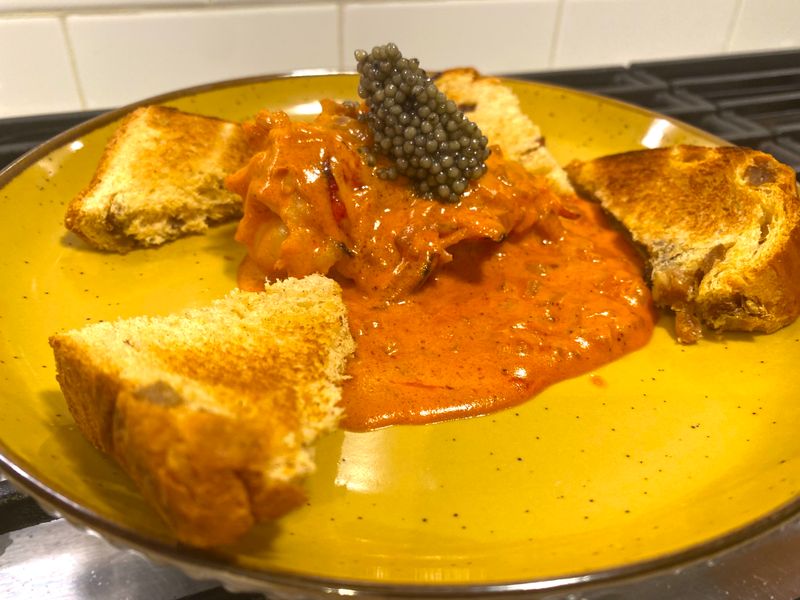
Lobster Newberg, with its luxurious taste and fancy presentation, was once the highlight of upscale dining. This dish combines lobster, butter, cream, and a hint of brandy to create a rich and creamy delight.
Though it dazzled the taste buds of many, Lobster Newberg’s opulence may have led to its decline as simpler seafood dishes gained favor. Yet, for those who experienced its decadence, it remains a symbol of culinary extravagance.
Consommé Madrilène
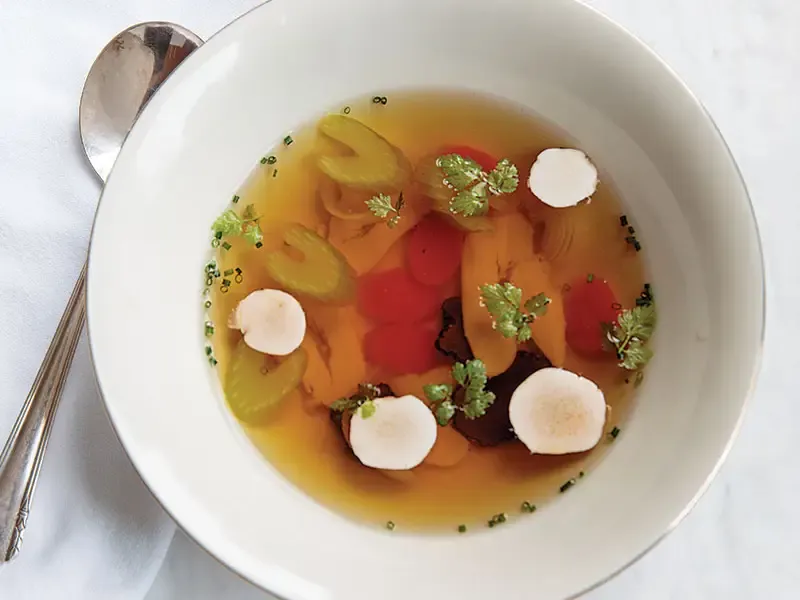
Consommé Madrilène is a clear soup that boasts a tomato-rich flavor, perfect for showcasing culinary finesse. Once a staple of formal dinners, it was often served as an elegant appetizer.
The clarity of the broth and the delicate balance of flavors made it a sophisticated choice. However, as dining preferences shifted towards heartier, more complex soups, Consommé Madrilène quietly disappeared from the culinary scene, leaving behind a legacy of subtle elegance.
Oysters Rockefeller
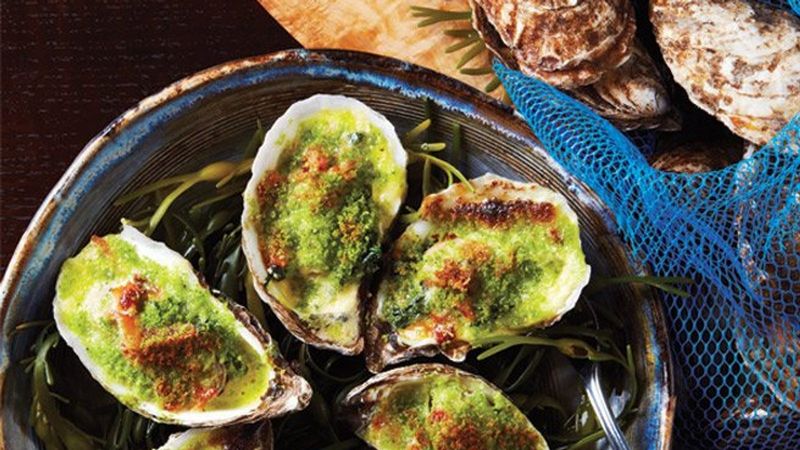
Oysters Rockefeller was the epitome of indulgence. Named after John D. Rockefeller for its richness, this dish features oysters topped with a buttery, herb-infused sauce.
Baked to perfection, the combination of flavors was an exquisite experience. Though it once graced the tables of high society, changing tastes and the rise of lighter fare have edged it out of favor. Yet, its luxurious legacy endures among those who crave culinary opulence.
Baked Alaska

Baked Alaska, a dessert of theatrical flair, wowed diners with its unique presentation. This dish combines layers of sponge cake and ice cream, encased in meringue, then briefly baked.
The contrast of hot meringue and cold ice cream creates a delightful surprise. Once a staple at fancy restaurants, Baked Alaska’s elaborate nature has made it a rarity today. Nonetheless, it remains a memorable testament to the creativity of classic dessert-making.
Jellied Madrilène
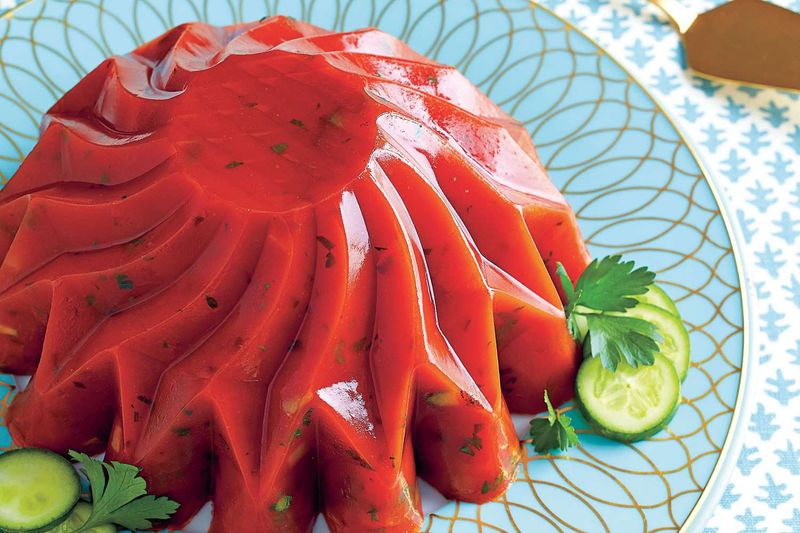
Jellied Madrilène, a chilled tomato consommé set with gelatin, was once a refreshing start to meals. This dish combined clarity with the firm texture of jelly, creating a unique dining experience.
While it delighted palates with its cool and savory profile, the advent of more dynamic starters has led to its decline. Yet, Jellied Madrilène remains a curious relic of culinary innovation from a bygone era.
Duck à l’Orange
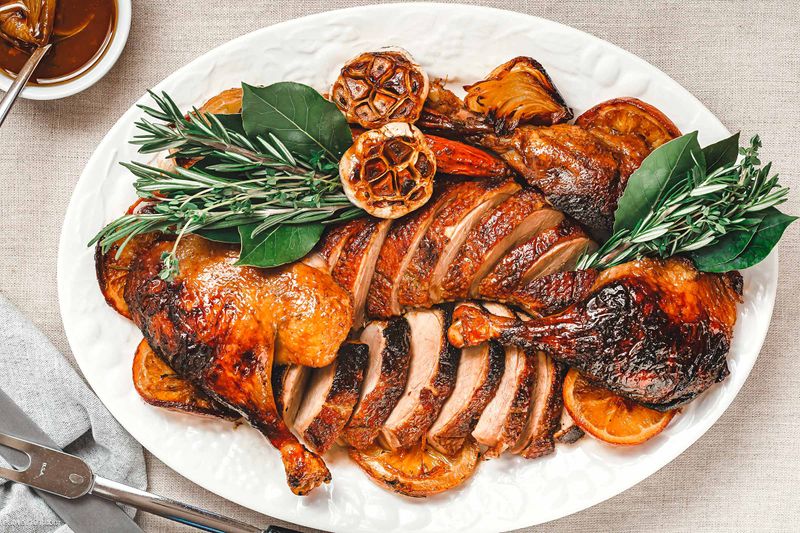
Duck à l’Orange is a dish that marries the richness of duck with the tanginess of orange. Once a mainstay of French cuisine, its sweet and savory balance was celebrated widely.
However, as culinary trends shifted towards lighter fare, this luxurious dish found itself less frequently featured on menus. Despite its decline, Duck à l’Orange remains a beloved memory for those who savored its exquisite harmony of flavors.
Peach Melba
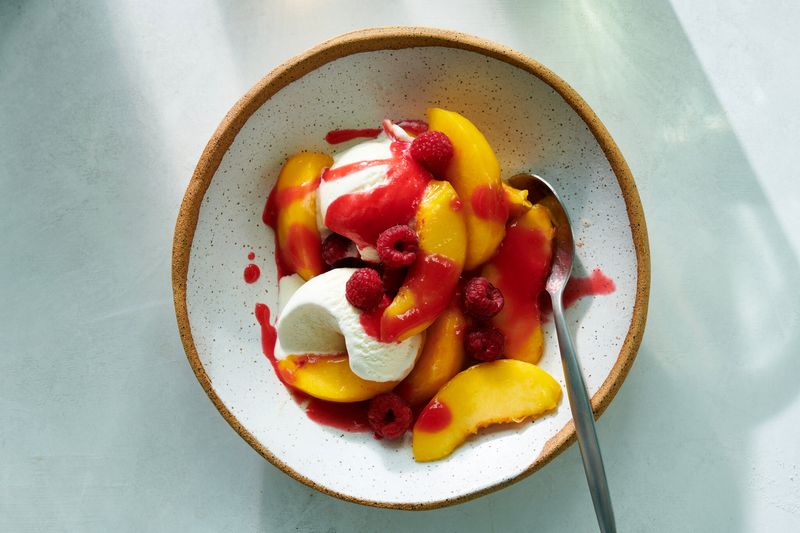
Created by the legendary chef Escoffier, Peach Melba was a tribute to opera singer Nellie Melba. This dessert features poached peaches, raspberry sauce, and vanilla ice cream, offering a symphony of flavors.
Once a favorite in elegant dining settings, its simplicity and charm have been overshadowed by modern dessert trends. Yet, Peach Melba’s blend of fruity and creamy elements continues to enchant those who appreciate its timeless appeal.
Salade Niçoise

Salade Niçoise, a vibrant Mediterranean salad, was once a staple of French-inspired menus. It combines tuna, hard-boiled eggs, tomatoes, and olives, creating a refreshing and nutritious meal.
Despite its wholesome allure, the rise of more adventurous salads has pushed it aside. Nevertheless, Salade Niçoise endures as a testament to the harmony of simple, high-quality ingredients.
Chateaubriand
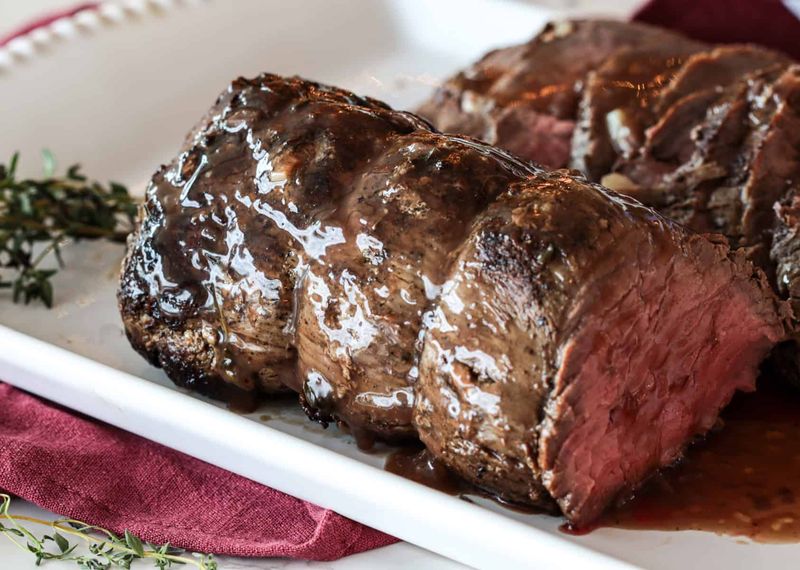
Chateaubriand, a luxurious cut of beef, was once synonymous with fine dining. This dish, often served with a rich sauce and seasonal vegetables, was a symbol of culinary sophistication.
Its preparation requires precision and skill, elevating the dining experience to an art form. As lighter, more diverse options emerged, Chateaubriand became less common, but it remains a cherished memory of gastronomic excellence.
Crêpes Suzette

Crêpes Suzette dazzled diners with its flamboyant presentation. These delicate pancakes, drenched in a buttery, citrus-infused sauce, were often flambéed tableside.
Though once a star of French cuisine, its theatrical nature has caused it to fade from everyday menus. Crêpes Suzette, however, continues to be celebrated for its exquisite blend of flavors and its glimpse into culinary showmanship.
Raspberry Charlotte

Raspberry Charlotte, a dessert of elegance and charm, was a delight of early 20th-century dining. It features a mold of ladyfingers filled with raspberry mousse, crowned with fresh berries.
While its intricate preparation once impressed many, simpler confections have emerged, leading to its decline. Yet, Raspberry Charlotte remains a sweet reminder of a time when desserts were both artful and indulgent.
Coquilles St. Jacques
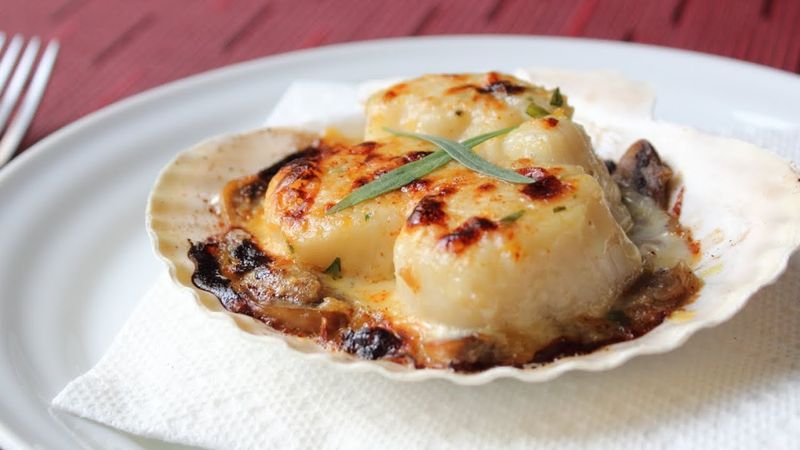
Coquilles St. Jacques, a dish of French origin, was a seafood lover’s dream. It consists of scallops cooked with cream, wine, and cheese, served in their shells.
The richness and presentation of Coquilles St. Jacques made it a favorite at elegant dinners. However, as tastes shifted towards lighter seafood options, its presence dwindled. It remains a cherished classic among those who appreciate its opulent flavors.
Steak Diane
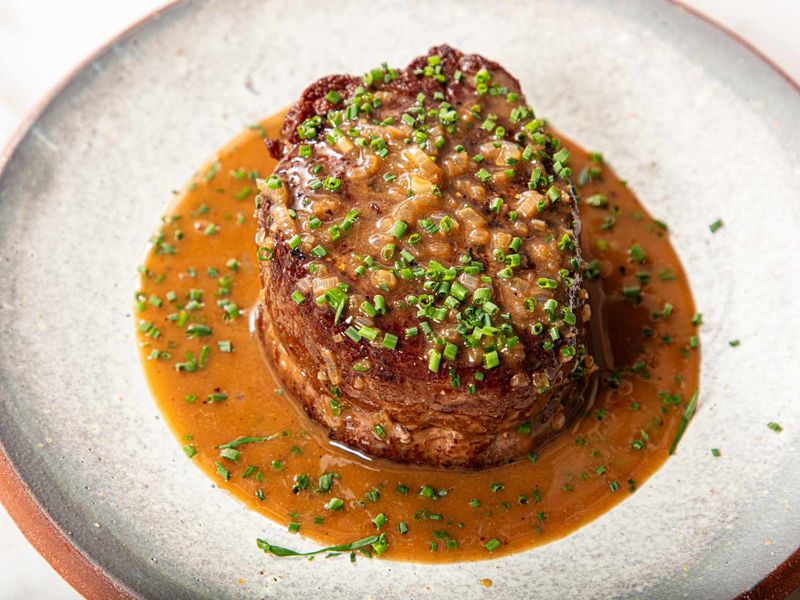
Steak Diane, with its tableside flambé, was once a showstopper at upscale restaurants. The dish features tender beef cooked with a luscious mushroom and brandy sauce.
Though its dramatic preparation captivated diners, the complexity led to its decline in favor of simpler steaks. For those who remember its charm, Steak Diane represents a period when dining was both an event and an indulgence.
Chicken Kiev

Chicken Kiev, with its crispy exterior and buttery filling, was a favorite of mid-20th-century dining. This dish features chicken breast rolled with herbed butter, then breaded and fried.
Though its indulgent flavor once delighted many, health-conscious trends have caused its popularity to wane. Nonetheless, Chicken Kiev remains a nostalgic reminder of hearty, flavorful meals enjoyed in the past.
Veal Oscar
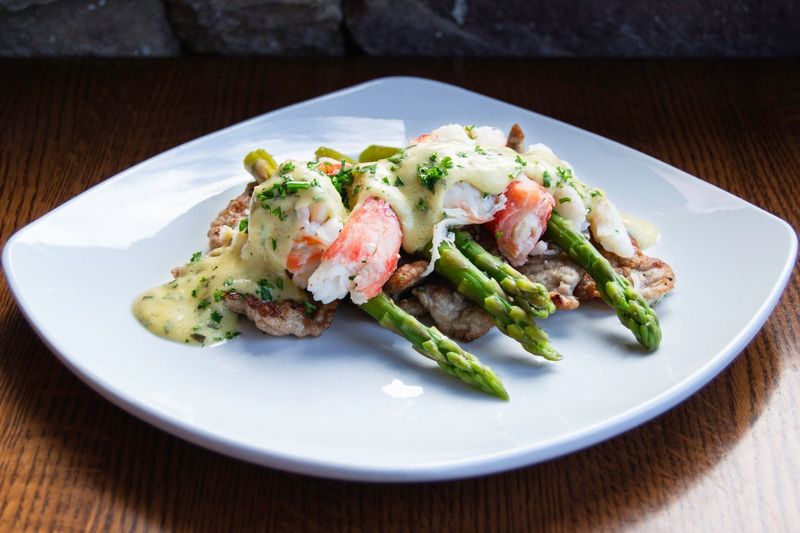
Veal Oscar, a luxurious dish named after Swedish royalty, combines veal cutlets with crab, asparagus, and béarnaise sauce. It was once a symbol of opulence in fine dining.
Though its rich flavors were highly sought after, changing tastes and dietary preferences led to its decline. Veal Oscar still holds a place in the hearts of those who relish its grandeur and unique combination of ingredients.
Eggs Sardou

Eggs Sardou, a New Orleans classic, was a brunch favorite for its inventive combination. It features poached eggs atop artichoke bottoms, smothered in hollandaise sauce.
This rich and savory dish, while once popular, has been overshadowed by new brunch creations. Yet, Eggs Sardou remains a beloved memory for those who cherished its unique flavors and Southern charm.
Sole Véronique
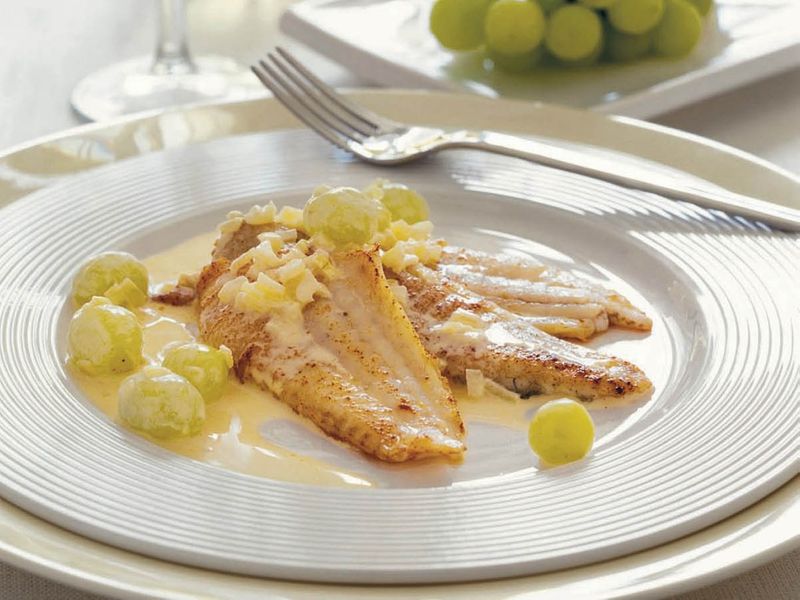
Sole Véronique, a dish of French sophistication, was once a darling of elegant dining. This dish features sole fillets in a creamy sauce, adorned with grapes.
The delicate flavors and refined presentation were hallmarks of its appeal. However, the rise of simpler fish preparations has led to its decline. Sole Véronique remains a cherished memory for those who experienced its delicate grace.
Tournedos Rossini
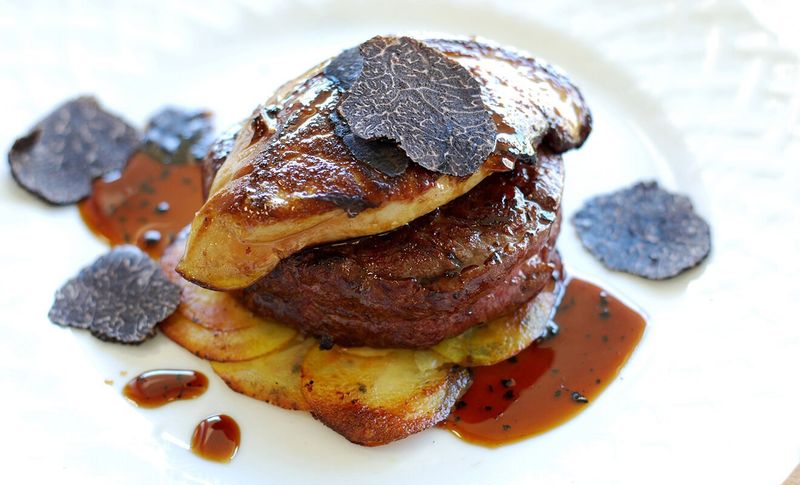
Tournedos Rossini, named after composer Gioachino Rossini, epitomized luxury dining. The dish features beef tenderloin topped with foie gras and truffles, served with a rich sauce.
Its decadent ingredients and exquisite presentation made it a favorite at fine dining establishments. However, as tastes shifted towards lighter fare, Tournedos Rossini became less common. It remains a symbol of culinary indulgence and artistry.
Gâteau St. Honoré

Gâteau St. Honoré, a tribute to the patron saint of bakers, is a masterpiece of French pastry. It features a puff pastry base topped with cream puffs and caramel.
Once a showpiece dessert, its intricate preparation has led to its decline in a world seeking quick confections. Nonetheless, Gâteau St. Honoré stands as a testament to the skill and creativity of traditional pastry artistry.
Trifle

Trifle, an English classic, was a staple at festive gatherings. This dessert boasts layers of sponge cake, custard, fruit, and cream, creating a symphony of flavors and textures.
Though its rich and colorful presentation was once beloved, changing dessert trends have led to its decline. Yet, trifle remains a fond memory for those who appreciated its layered indulgence and the joy it brought to celebrations.
Leave a comment